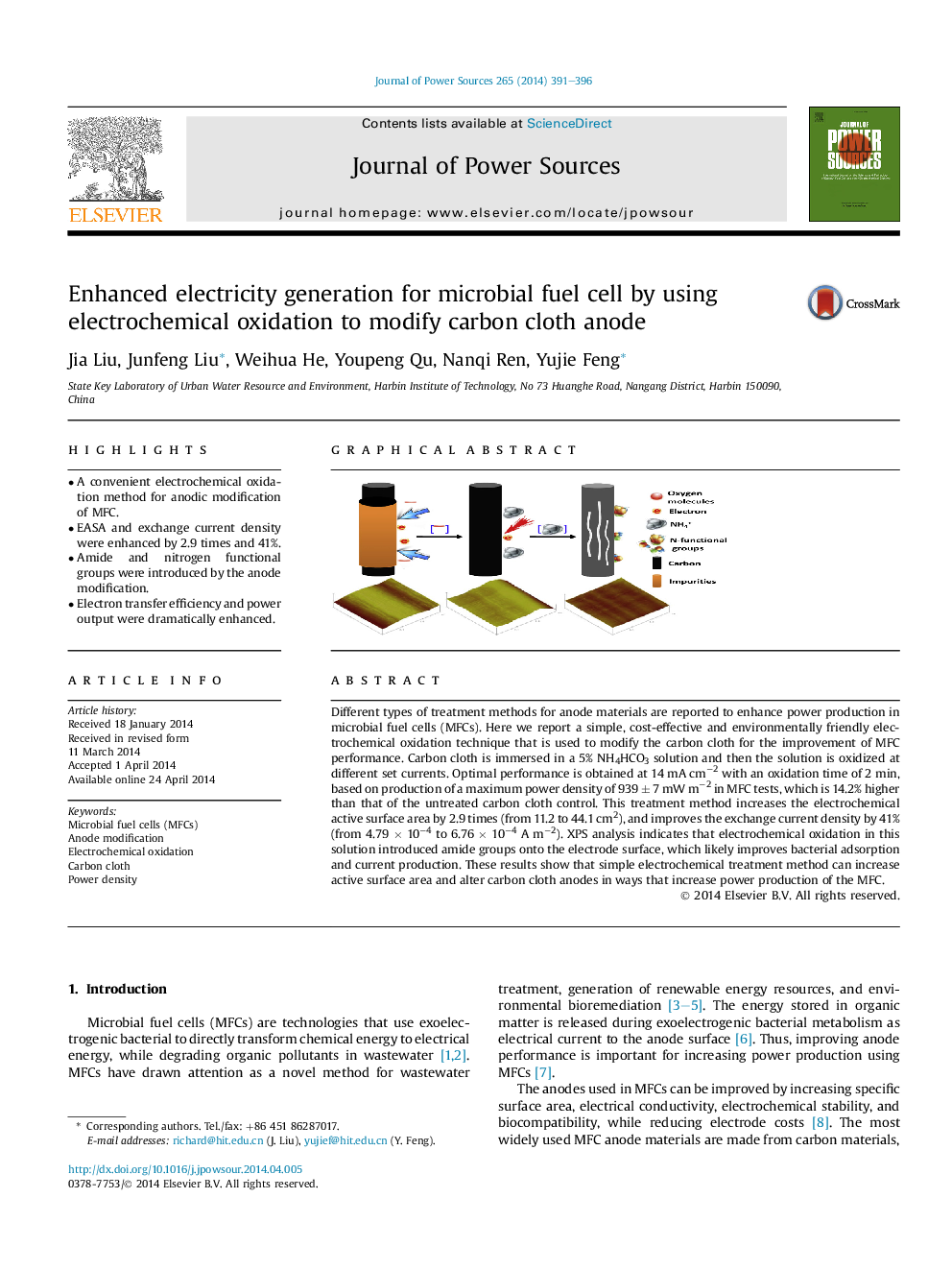| کد مقاله | کد نشریه | سال انتشار | مقاله انگلیسی | نسخه تمام متن |
|---|---|---|---|---|
| 1284039 | 1497967 | 2014 | 6 صفحه PDF | دانلود رایگان |
• A convenient electrochemical oxidation method for anodic modification of MFC.
• EASA and exchange current density were enhanced by 2.9 times and 41%.
• Amide and nitrogen functional groups were introduced by the anode modification.
• Electron transfer efficiency and power output were dramatically enhanced.
Different types of treatment methods for anode materials are reported to enhance power production in microbial fuel cells (MFCs). Here we report a simple, cost-effective and environmentally friendly electrochemical oxidation technique that is used to modify the carbon cloth for the improvement of MFC performance. Carbon cloth is immersed in a 5% NH4HCO3 solution and then the solution is oxidized at different set currents. Optimal performance is obtained at 14 mA cm−2 with an oxidation time of 2 min, based on production of a maximum power density of 939 ± 7 mW m−2 in MFC tests, which is 14.2% higher than that of the untreated carbon cloth control. This treatment method increases the electrochemical active surface area by 2.9 times (from 11.2 to 44.1 cm2), and improves the exchange current density by 41% (from 4.79 × 10−4 to 6.76 × 10−4 A m−2). XPS analysis indicates that electrochemical oxidation in this solution introduced amide groups onto the electrode surface, which likely improves bacterial adsorption and current production. These results show that simple electrochemical treatment method can increase active surface area and alter carbon cloth anodes in ways that increase power production of the MFC.
Figure optionsDownload as PowerPoint slide
Journal: Journal of Power Sources - Volume 265, 1 November 2014, Pages 391–396
